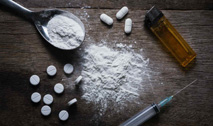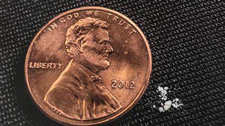

Be safe when entering unfamiliar Homes, Apartments, and Vehicles
Call us and we can provide on-site Sampling and Testing Services!

| Q: Common ways a home can become contaminated with fentanyl?
A: Smoking fentanyl contaminates a home, any vapor not inhaled into the user's lungs is released into the surrounding area, which releases toxic substances. The contaminants get onto surfaces and into drywall, cabinets, Air Conditioning and Heating systems, curtains, furniture and carpeting. Fentanyl in powder or pill form can become airborne and spread through out the residence from opening and closing a door, air flow from windows being open and air flow from Air Conditioning and Heating systems, all of which can cause multiple areas and surfaces to become contaminated. Q: What are the health consequences of being exposed to property contaminated from fentanyl use? A: The possibility of death is first and foremost depending on how much fentanyl someone is exposed too. People exposed to contaminated sites in the short-term report headaches, nausea and vomiting, respiratory problems eye irritation. Fentanyl can affect the central nervous system, liver and kidneys, and cause birth defects, miscarriages, and cancer. Many users believe that they are purchasing heroin and do not know that they are instead purchasing fentanyl-laced heroin – which often results in accidental overdose deaths. Q: How can I tell if a property is contaminated with fentanyl? A: If the property has had someone using fentanyl, you might find glassware, hoses, red or yellow staining, stained coffee filters, and unusual quantities of common household chemicals and substances, such as hydrogen peroxide and iodine, in unusual places which could relate to other drugs including Meth being used with fentanyl. Signs of use might also include syringes, pipes and burned aluminum foil. Fentanyl is often added to heroin, cocaine and marijuana to increase its potency, or it can be disguised as highly potent heroin. Q: Are some properties more suspect than others? A: Any property that has been in foreclosure is a red flag, as are HUD homes, experts say. But no home is guaranteed safe. Q: What other things can I do to protect myself? A: Ask neighbors about the property and who lived there. Search law-enforcement records for that address. In addition to the high toxicity, one of the dangers of encountering fentanyl is the particle size, which ranges from 0.2-2.0 microns (2.0 microns is 0.002 millimeters). Q: Can I be exposed to fentanyl just walking into or sitting in an area where fentanyl was used? A: Even small size particles can easily become airborne in the right environment. Because fentanyl can be encountered as a very fine dust or aerosol, extreme caution should be used when fentanyl is known to have been present or an overdose has occurred. If you suspect the presence of Fentanyl in your home, leave immediately, it is important to hire trained professionals to evaluate and cleanup the contaminated property. Conduct thorough research before renting or buying a new home and do not jump to conclusions based on appearance alone. Fentanyl can cause death should be taken seriously, and precautions should be taken to preserve the health of yourself and others. Q: Common ways a vehicle can become contaminated with fentanyl? A: Today's fentanyl for the most part is being transported in vehicles, especially rental vehicles to avoid having the transport vehicle seized by a Law Enforcement Agency. Fentanyl residue is being commonly found within the transport vehicle in a powder or pill form which can become airborne and spread through-out the vehicle from opening and closing the vehicle door and air flow from Air Conditioning and Heating systems, all of which can cause multiple areas and surfaces to become contaminated in the vehicle. Additionally, contamination can be found from smoking fentanyl in combination with other drugs such as marijuana or methamphetamine, which contaminates the vehicles interior. Any vapor not inhaled into the user's lungs is released into the surrounding area, which releases toxic substances. |



| CSFD Sampling and Testing Service
Phone: (559) 701-9926 for more information and pricing
email: mail@csfd-ca.com Mail: CSFD, P.O. Box, 3851, Clovis, CA 93619 |